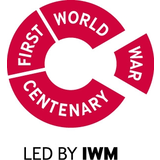Medical loan service
During the First World War
The Joint War Committee
Following the outbreak of the First World War on 4 August 1914, the British Red Cross formed the Joint War Committee with the Order of St John. They worked together and pooled their fundraising activities and resources. The Committee supplied services and machinery in Britain and in the conflict areas abroad.
They also organised a medical loan service to support the naval and military forces in the UK and abroad.
The Red Cross provided short-term loans of medical equipment, such as wheelchairs, for sick and wounded soldiers.
Inter-war activity
After the war, the Red Cross built upon its original objectives to include peacetime activities. The charter of the Red Cross was extended so the organisation could undertake work to improve people’s health.
Medical equipment depots were established from 1919 onwards to lend surplus equipment that had been needed during the war. The depots began when doctors asked Red Cross detachments if they could loan people items such as bed rests and invalid chairs. This service developed in many areas, resulting in a number of permanent equipment depots being set up by the 1920s.
The Voluntary Aid Detachments (VADs) of Britain contained over 90,000 members by 1919 – a valuable body of workers. An inter-county conference was held in 1920 to discuss future peace work for the Red Cross and St John and to organise a central scheme across counties.
The Joint Council of the British Red Cross and Order of St John was receiving increasing demands every day from hospitals for the luxuries, medical stores and games that they supplied to military hospitals during the war.
Mobility aids loan
The medical loan service began following the end of the war when Red Cross Branches found themselves with lots of equipment that had been used in wartime auxiliary hospitals.
This equipment was quickly put to good use and medical supply depots and the medical loan service were soon established in many counties. As well as the surplus hospital equipment, depots were instructed to provide a range of equipment that could be usefully hired by the population on a weekly basis.
The medical supply depots fulfilled a real need for home nursing equipment, as cottage and voluntary hospitals provided little, and equipment was expensive to buy. The medical loan service has continued to grow and it now loans wheelchairs and medical equipment to tens of thousands of people every year.
Sources
- 'Reports of the Joint War Committee and the Joint War Finance Committee of the British Red Cross Society and the Order of St John of Jerusalem in England on Voluntary Aid rendered to the Sick and Wounded at Home and Abroad and to British Prisoners of War, 1914-1919’. Published HMSO, 1921.
- Oliver, Beryl (1966) The British Red Cross in Action; London; Faber and Faber Limited.
You may also be interested in:
Food parcels for prisoners
Volunteers made parcels of food and clothing for prisoners of war abroad.
Missing and wounded service people
The Red Cross founded a 'wounded and missing' department in WW1.
Resources for researchers
If you're researching WW1, these museums, archives and websites may be helpful.


